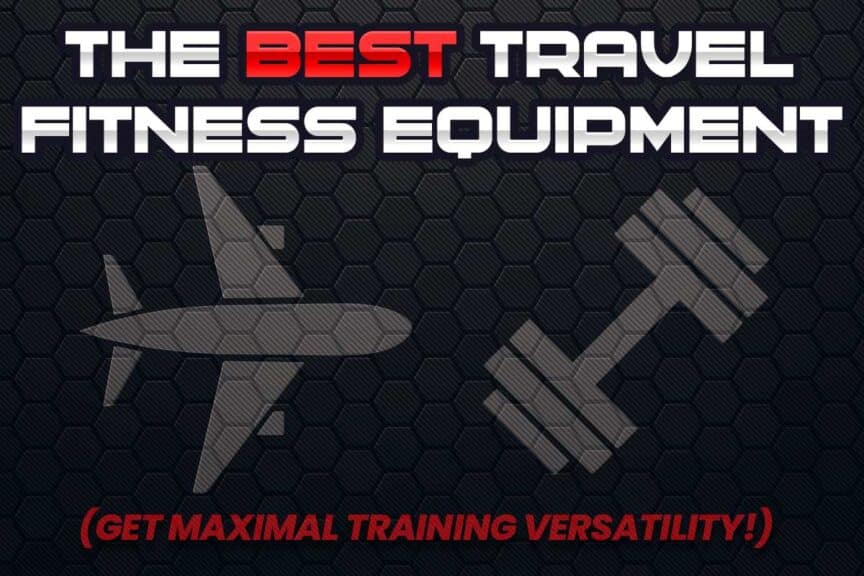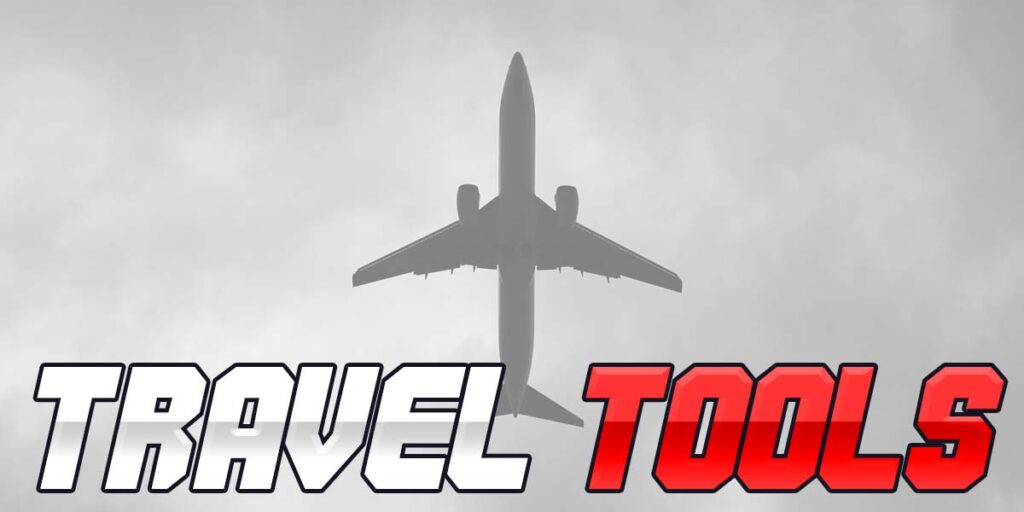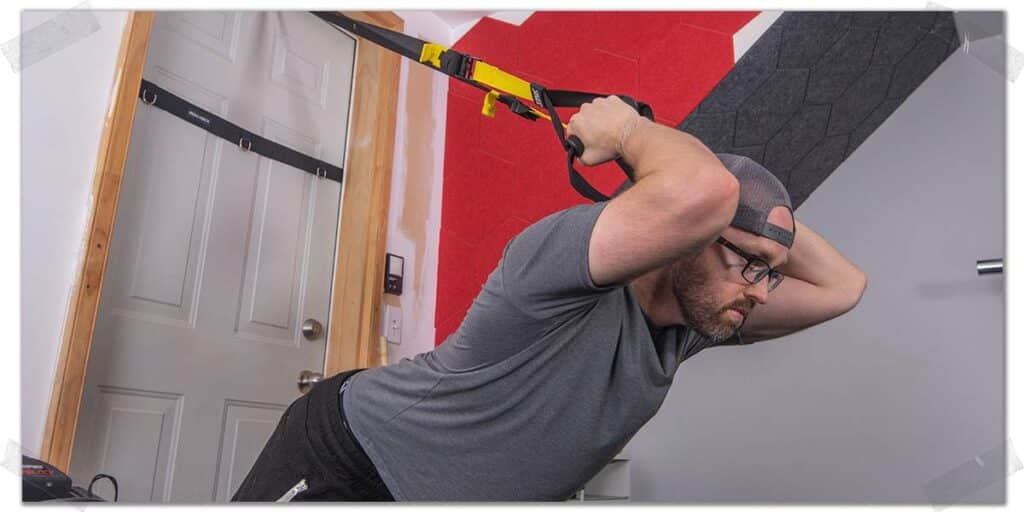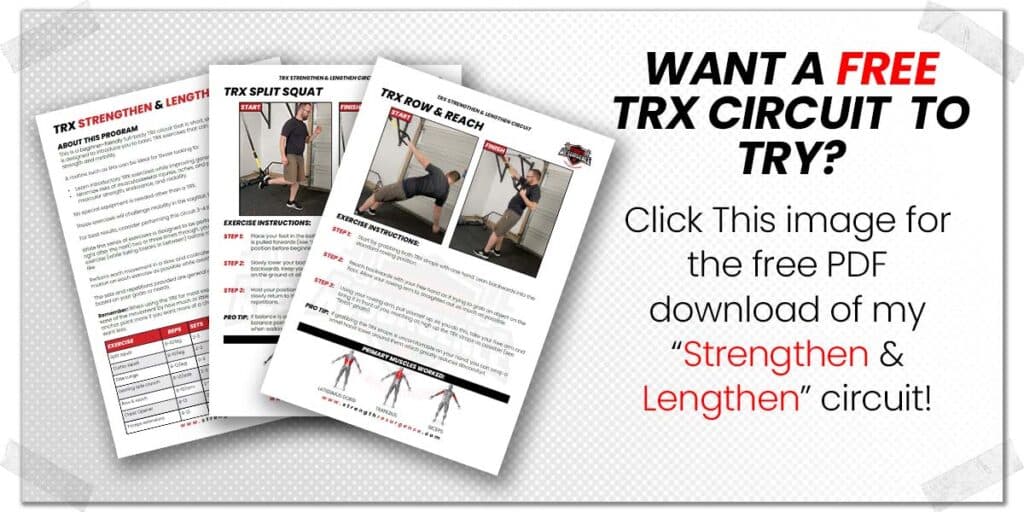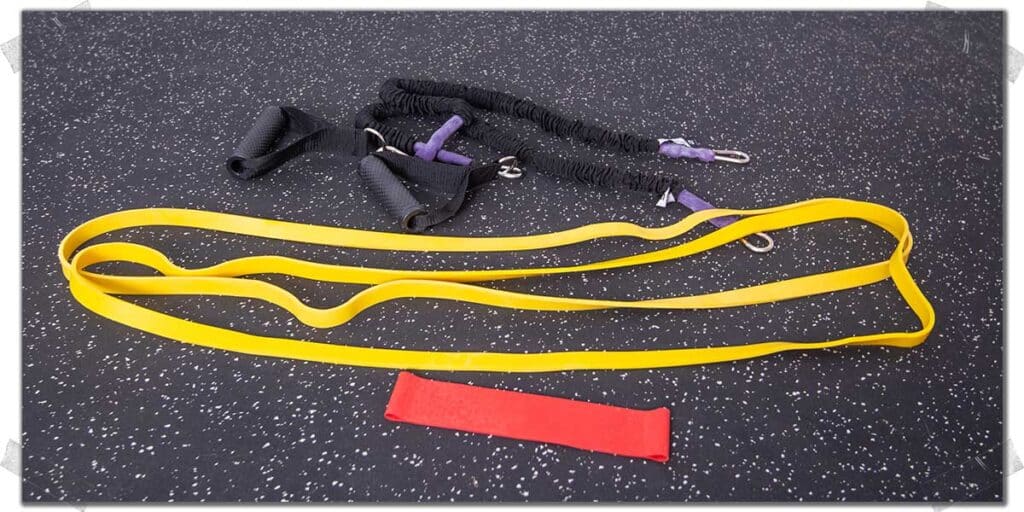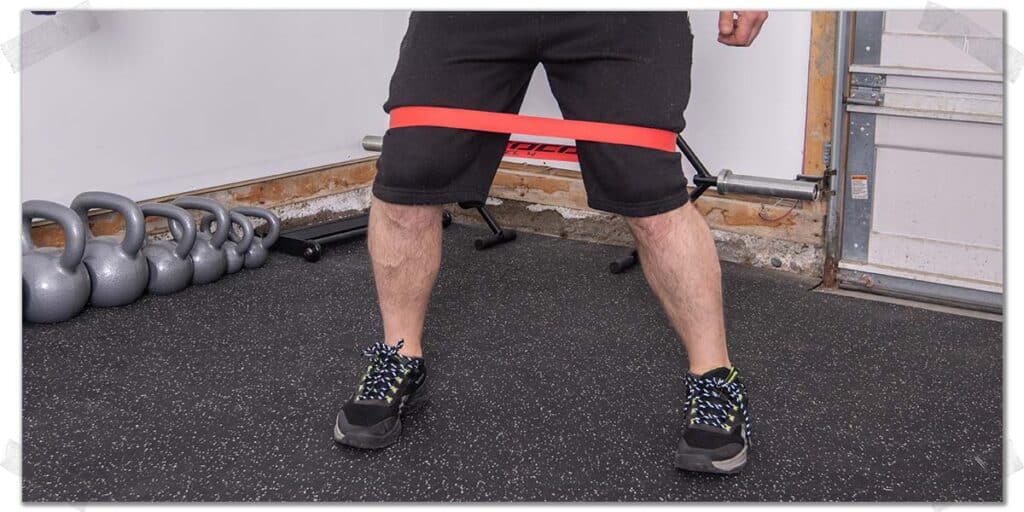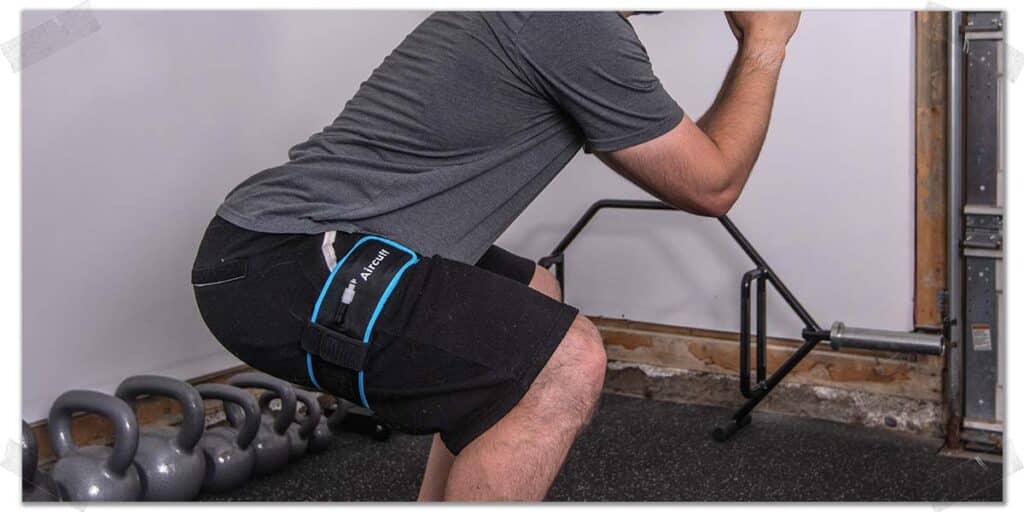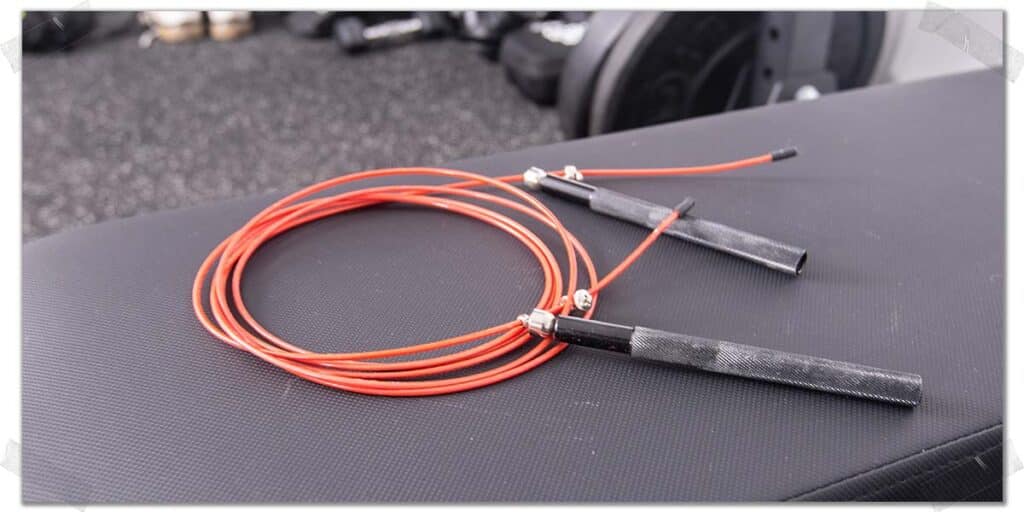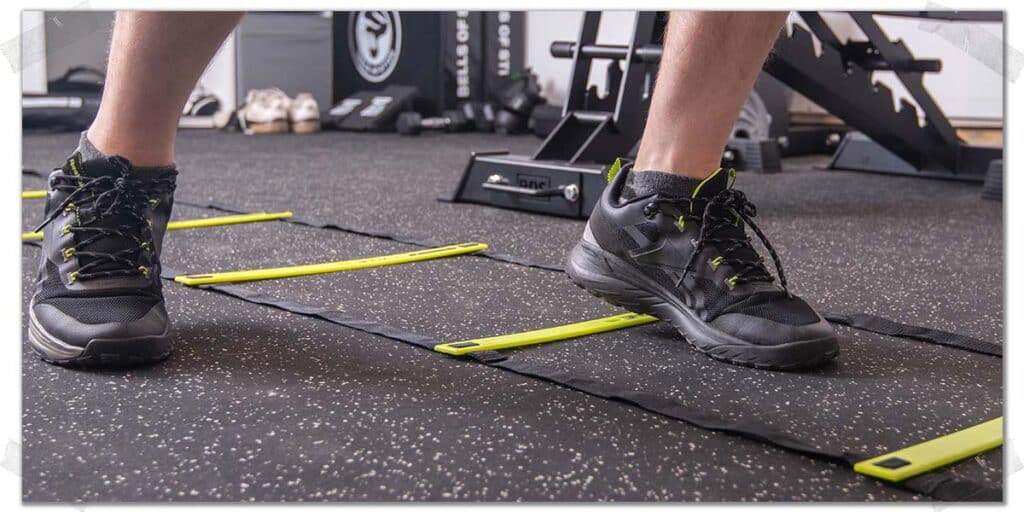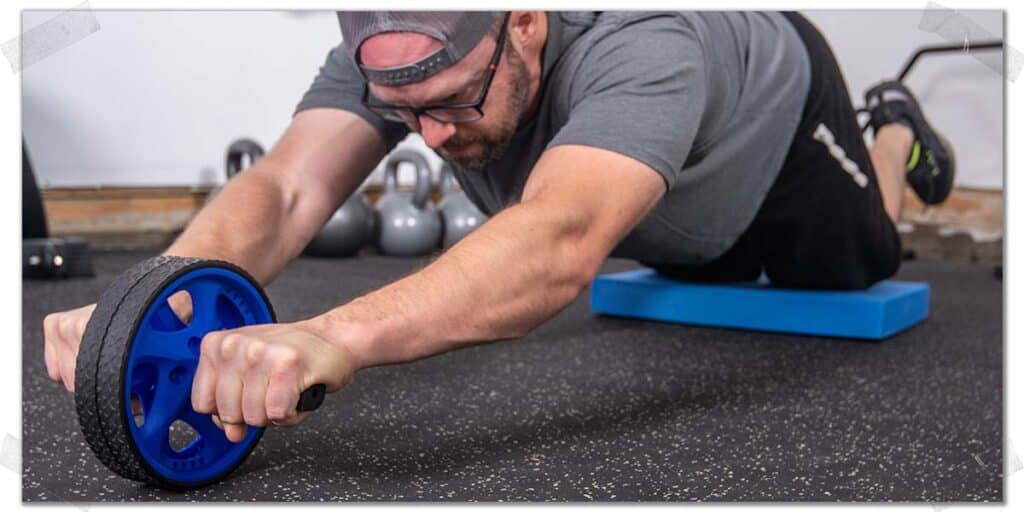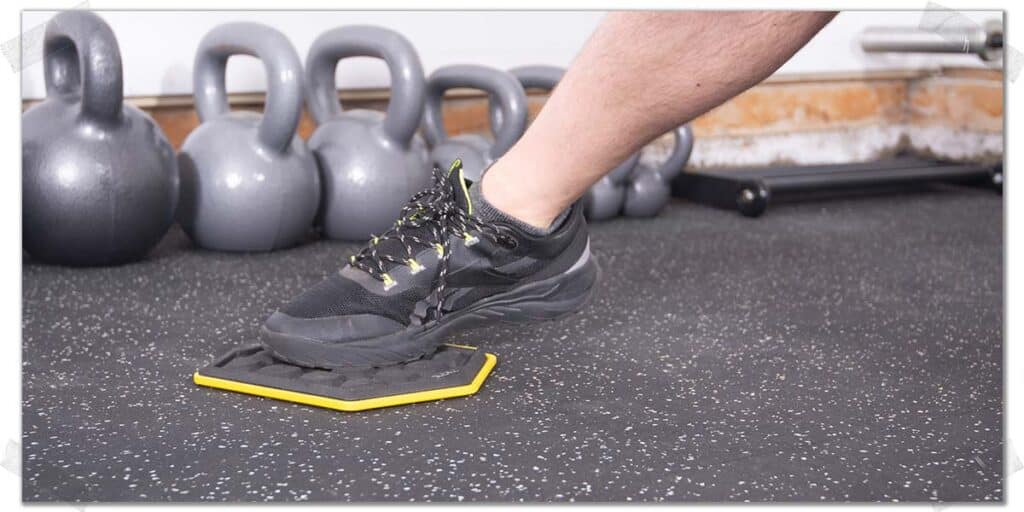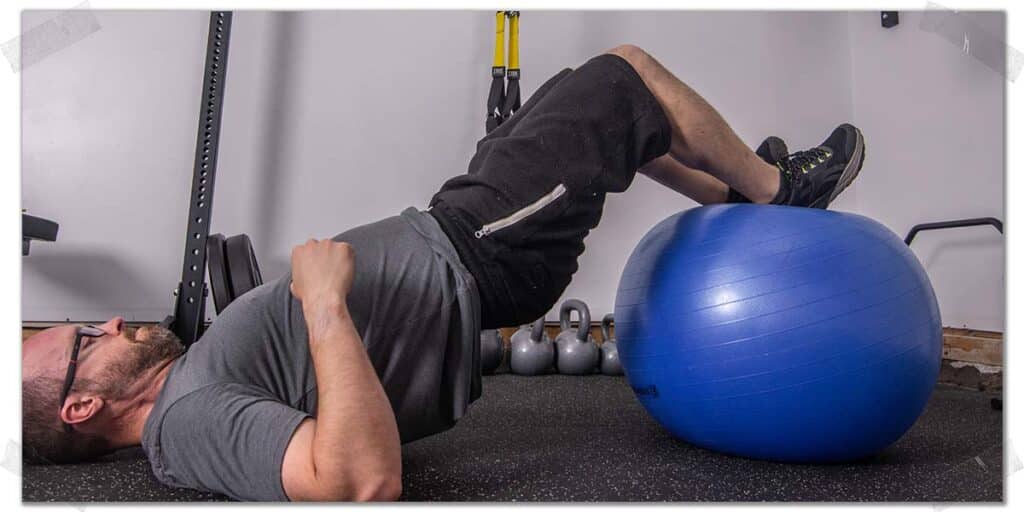While there’s nothing like working out in your favorite local gym or your home gym, where all of your workout and exercise needs can be met, sometimes life calls us to temporarily leave our hometown for work-related or personal travel. And you can’t exactly bring your gym along for the journey.
But what you can do is know which type of equipment you can pack in your bag to ensure you keep rocking your fitness and training routine no matter where you’re going. And if you want to know what that equipment likely is—equipment that will provide a world of portable workouts for just about any individual—you’ll find the answer in this article.
Here’s what it ultimately comes down to:
The best fitness equipment to pack on a trip will be equipment that provides exceptional exercise versatility, takes up minimal space, weighs very little, and doesn’t cost much money. You will find this equipment listed below, along with professional tips on how to get the most from each item.
The goals of the list I’ve assembled below are simple: bring equipment that strikes the sweet spot of providing effective exercise and resistance training while affording maximal practicality across a variety of domains. Simple as that! So, whether you’re travelling for a day, a week, or a month, the equipment in this list has got you covered.
So, let’s get to it!
A small request: If you find this article to be helpful, or you appreciate any of the content on my site, please consider sharing it on social media and with your friends to help spread the word—it’s truly appreciated!
Also, if you want to maximize your chances with staying fit, active, and crushing your workouts while travelling, check out my article: Staying Fit When You Travel: Easy, Practical, & Proven Tips.
Item 1: TRX suspension trainer
If there were only one single piece of equipment I could ever pack in my travel bag and bring along for any trip I go on, it would absolutely be the TRX suspension trainer. No question about it. It’s been number one on my personal list for years.
The TRX suspension trainer is a whole-body training device that uses your body weight as the resistance for your exercises. The beauty is that you can easily modify the amount of resistance (challenge) you use for almost every exercise by modifying your body’s position. It allows for near-instantaneous and precisely-tuned adjustments, unlike nearly any other piece of equipment out there.
But that’s only a small part of the story! Not only does the TRX allow for a near-infinite number of strengthening exercises that can be fine-tuned to meet your ideal challenge, but it can also be used within a hotel room, in a gym, or even outdoors!
And it keeps getting better: the TRX can also be used for more than just strength training exercises; it can also be used for mobility training and balance training. I often use mine just as much for stretching and mobility-based exercises as I do for general strengthening exercises.
And if all of that wasn’t enough, the TRX is fantastic for beginners and fitness experts alike. I’ve trained hundreds of clients and athletes on this suspension trainer over the years, ranging from super-fit and gifted athletes to average Joe’s, all of whom could fine-tune their exercises to meet their needs and abilities.
Again, if you were looking for only one piece of kit to bring on your travels to ensure effective training, this would absolutely be the one.
If you want more information on the benefits of the TRX, you can check out my other related articles:
Article 1: How (And Why) To Use A TRX For Injury Recovery (Detailed Guide)
Article 2: How To Use A TRX For Injury Prevention (Superior Benefits)
Item 2: Resistance bands (large & mini)
Resistance bands are age-old and are still used today by a rather large portion of active populations, meaning they’re worth having on hand. Like most other items on this list, the world of exercises and workout intensities they afford is quite expansive.
They come in all sorts of shapes and sizes. You can pick up the kind with handles, or you can pick up the type that looks like giant rubber bands. Both have their advantages and drawbacks. I use both in my home gym and typically only take the giant rubber band variety when I travel.
Pro tip: You can often use large resistance bands by themselves but can also hook them up to various other pieces of strength training and fitness-based equipment (such as barbells, squat racks, chin-up bars, etc.), meaning you can use them in a wide variety of ways.
My recommendation is to have a few different types of bands on hand. These include:
- One or two large, medium-width band
- One or two thin, large bands
- A couple of mini bands (of light, medium, or high resistance)
Personally, I’d try my best to hook the larger bands up to other pieces of fitness equipment in the hotel gym to maximize my training versatility, but if nothing else, I could use them in my hotel room for some banded squats, thrusters, shoulder, and various arm exercises.
The mini bands will come in handy for glute and hip exercises (placing them around your knees or ankles) as well as for shoulder exercises. Check out my YouTube video below for a few challenging hip and shoulder exercises you can do with a mini band!
Item 3: Blood flow restriction bands
Blood flow restriction bands aren’t a direct piece of fitness equipment, but rather, they are a type of equipment you use when you train. And let’s just say they’re more than worth packing when you travel. Here’s why:
Blood flow restriction (BFR) is a novel form of resistance training that involves wearing restrictive cuffs around your legs or arms when exercising, and the science is very clear that BFR training can elicit the same gains in muscle hypertrophy (strength) and size when performing resistance training exercises at 20-30% of an individual’s maximal abilities. (For traditional resistance exercise, you’ll need to use weights that are approximately 65% of your maximal abilities).
When you travel, it can be difficult to find gyms and facilities that afford the weights and machines you’d otherwise need to keep up with your strength training pursuits. When this is the case, getting adequate stimulation to your muscles to continue to induce gains in size and strength can be tough.
But with BFR bands, you won’t need to track down hundreds of pounds of plates or use heavy weight stacks to exhaust your muscles. It’s entirely likely that even a basic hotel gym will have enough on hand with some lighter dumbbells or kettlebells to take care of your muscle-building needs. Seriously, it doesn’t take much.
Personally, I’d recommend either the BStrong BFR training system or the RecoverFun AirCuff system. I use both, and both systems are quite travel friendly.
Pro Tip: While there are numerous ways to perform BFR training, a 30/15/15/15 repetition scheme (with 30-second rest breaks between each set) is often used in scientific studies and routinely shows significant results.
If you want to know more about how BFR training works, you can check out either of my articles below (just click/tap either link):
ARTICLE 1: What Is Blood Flow Restriction Training? How, Why, and When To Use It
ARTICLE 2: Blood Flow Restriction: Evidence And Uses For Injury Rehabilitation
Pro tip: want some immensely effective workouts? Perform your blood flow restriction exercises using your TRX or other equipment on this list. This combination will provide you with all you’ll ever need to keep your muscles growing and your strength increasing while you travel.
Item 4: A skipping rope
It’s old school, and it works. There’s a reason why skipping ropes have been around for hundreds of years; these things aren’t some fad-based or gimmicky piece of equipment.
It may not be as novel or as exciting as slapping on some blood flow restriction cuffs or using the TRX, but fitness equipment doesn’t have to be new or “sexy”—it just has to be effective. And a skipping rope is as effective for improving a few key aspects of one’s physical fitness as it is simple.
They’re the perfect travel item if you’re looking for a cardiovascular workout or want to give your lower body some attention for your training. There’s nearly zero space required to use one, and in a handful of minutes, you’ll have a decent sweat going, and your heart will be pumping.
And if you think you’re not coordinated enough to use a skipping rope, taking the time to learn on your travels may be the perfect time to learn. Rope skipping requires many physical abilities, one of which is coordination, and the more coordinated you are with your body, the better off you’ll likely be with your overall fitness pursuits.
But if, for whatever reason, skipping rope isn’t your thing, the next item on this list will provide a very similar benefit without the frustration that is often incurred by those who just don’t feel they’re very good with keeping a consistent skipping or jumping pattern going.
Item 5: An agility ladder
Full transparency here: I don’t often use agility ladders these days when training in my garage gym. But that doesn’t mean they can’t be beneficial in a variety of ways; they can spice up your training to make it more stimulating, they can get your heart rate elevated, and get your feet flying! And, like much of the other equipment on this list, an agility ladder is incredibly inexpensive to purchase and takes up very little room in your travel bag.
Just lay the ladder on the ground, and away you go! You can pick any imaginable foot pattern and have at it. A quick Google or YouTube search will reveal content showing dozens upon dozens of patterns to try. You can keep them simple or make them quite complex. Whichever you choose, a twenty-minute agility ladder session will likely have you sweating and burning a surprising number of calories.
Item 7: The ab wheel
The ab wheel is one of those pieces of exercise equipment that seems to be able to blast your core muscles, no matter how fit or in shape you are.
There’s a world of exercises you can perform on this little device, and it’s dirt-cheap to pick one up. Whether you want to make your ab rolling exercises easy or immensely challenging, there are plenty of ways to progress or regress ab wheel exercises to meet the needs of most individuals.
Related article: Best Ab Wheel Exercises For Avoiding Back Pain | Beginners, Listen Up!
It might not be within the top three pieces of equipment I would bring (mainly since it’s a bit limited in its versatility when compared to items such as the TRX or a set of BFR bands), but it’s still an outstanding piece of equipment to have on hand.
Pro tip: You can take one of your large resistance bands and rig it up to your ab wheel if you want to modify the intensity of your ab exercises to make them easier or more challenging.
Item 8: Slider discs
Slider discs or exercise sliders can be a smart piece of equipment to pack for your travels since they typically take up the size of two medium-sized dinner plates stacked on top of one another. And, again, they’re dirt-cheap and afford a variety of ways to change up and perform exercises, stretches, and other general movements.
My favorite use for them is for improving my hip and groin mobility, though I often use them for additional hip-strengthening exercises by performing skater strides. I also often use them for core strengthening by performing exercises such as pikes (with my feet on the discs) or slide-outs, which are similar to ab wheel rollouts but instead of having my hands on the ab wheel’s handle, I have them placed on the discs.
Pro tip: Since sliders are designed to work on carpets and similar surfaces, they’re perfect for use in a hotel room or similar bedroom area.
Item 9: A deflated stability ball
While I would very likely bring every other piece of portable equipment on this list before bringing a deflated stability ball (only because it loses a few practicality points since you have to deflate and re-inflate it for travelling, which is a mild nuisance), it’s still absolutely worth having on this list.
If you want one piece of equipment that can provide a truly surprising amount of exercises (and a TRX is out of your price range or not your thing), the stability ball might be it, particularly due to its versatility and the fact that it can replace other pieces of equipment on this list, such as the ab wheel or exercise sliders.
As an example: a stability ball (also commonly called a Swiss ball) is way more versatile than the ab wheel, and you can do very similar and challenging core exercises with it to what you can perform on the wheel. You could even argue that it’s more space-efficient in your travel bag than the wheel since it can be folded up and flattened out.
If you need ideas of the literal hundreds of exercises you can perform with just a stability ball, a quick Google or YouTube search will provide you with all you need. And don’t forget that you can combine using a stability ball with other pieces of fitness equipment and other traditional exercises to create an essentially limitless number of strength-building and mobility-enhancing movements ranging from easy to extremely challenging!
Final thoughts
If you know your options and play your cards right, you can pack a handful of inexpensive and highly effective pieces of fitness equipment into your travel bag without breaking the bank and while having plenty of space to spare. It’s all about bringing equipment that is versatile to fit your needs, and the equipment on this list should take care of the majority of your training needs while you’re out of town!
Frequently Asked Questions
I always want to be as helpful as I can within my articles, so I’ve included a few brief answers to some commonly asked questions similar to the topic of this article.

Hi! I’m Jim Wittstrom, PT, DPT, CSCS, Pn1.
I am a physical therapist who is passionate about all things pertaining to strength & conditioning, human movement, injury prevention and rehabilitation. I created StrengthResurgence.com in order to help others become stronger and healthier. I also love helping aspiring students and therapists fulfill their dreams of becoming successful in school and within their clinical PT practice. Thanks for checking out my site!

